“Dem bones, dem bones, dem dry bones” rang the soundtrack in my head as I visited the infamous Bone Church or “Ossuary” in Kutna Hora, Bohemia. Crammed with the remains of more than 40,000 mortals displayed on walls, ceilings and cherub-topped pyramids, I didn’t know whether to be impressed or repulsed.
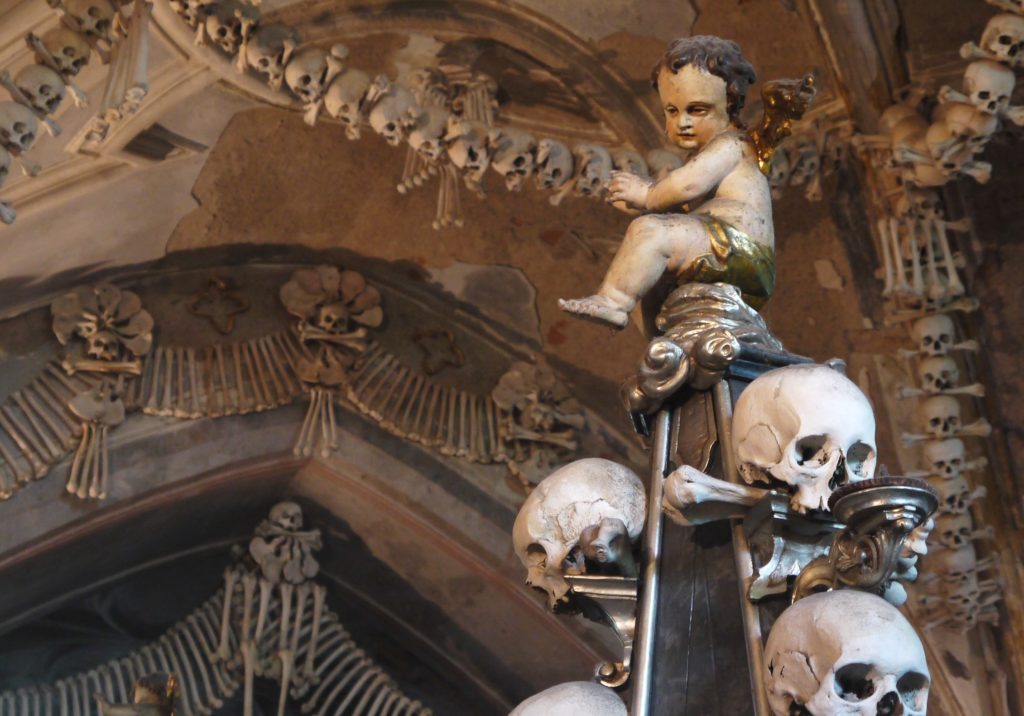
Church of Bones, Kutna Hora
The intriguing tale of the Bone Church dates back to the 13th century when the Abbot of Sedlec Monastery returned from a visit to Palestine with a pocketful of Holy soil which was sprinkled on the cemetery surrounding All Saints Chapel.
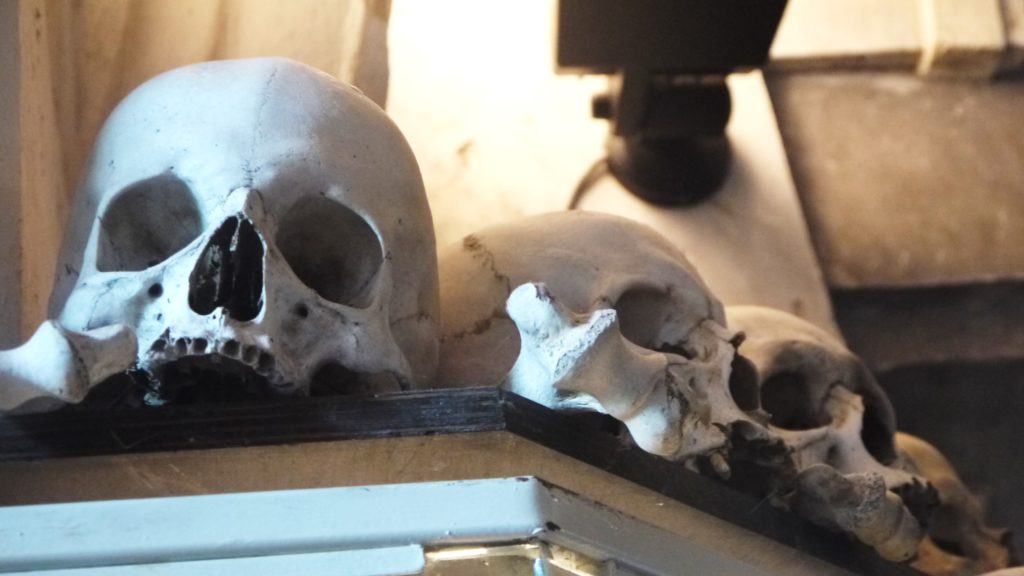
The Bones Church, Kutna Hora, Czech Republic
This link with the Holy Land led to the graveyard becoming a much sought-after burial site among Central Europe’s Aristocracy. The ensuing Thirty Years War ensured that the number of burials outgrew the space available and the older remains began to be exhumed and stored in the chapel. With the Great Plague adding to the morbidity rate, it’s estimated that the chapel now contains the bones of up to 40,000 people.
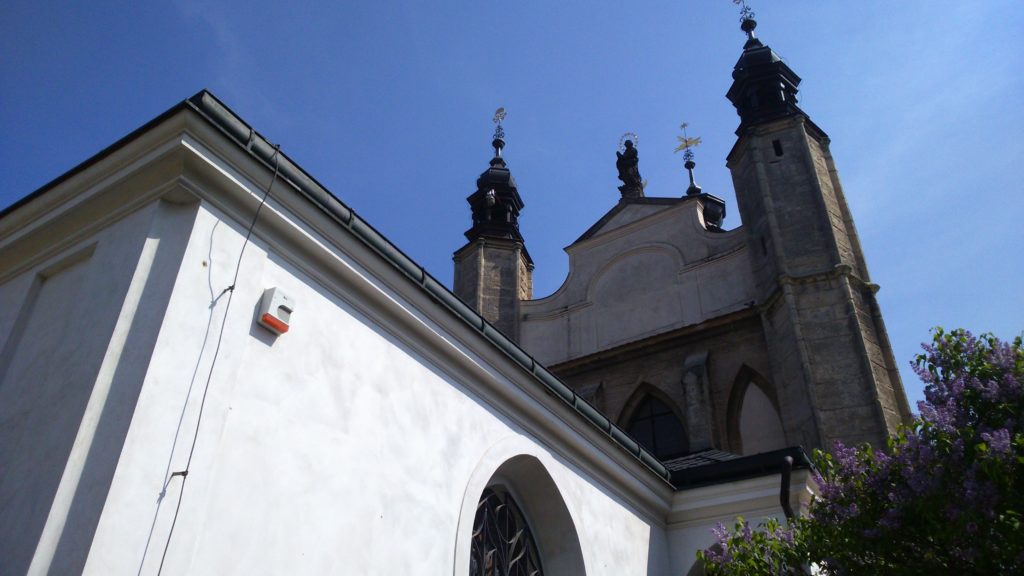
The Church of bones, Kutna Hora, Czech Republic
From the exterior, the church looks unprepossessing until you venture inside. Every inch of wall and ceiling is festooned in glowing marble effects. From a distance, it has a rich, opulent feel until closer inspection reveals the horrifying detail. Descending into the Chapel’s lower floor, I’m mesmerised by the endless piles of bones, piled higgledy-piggledy up to three metres high in each corner.
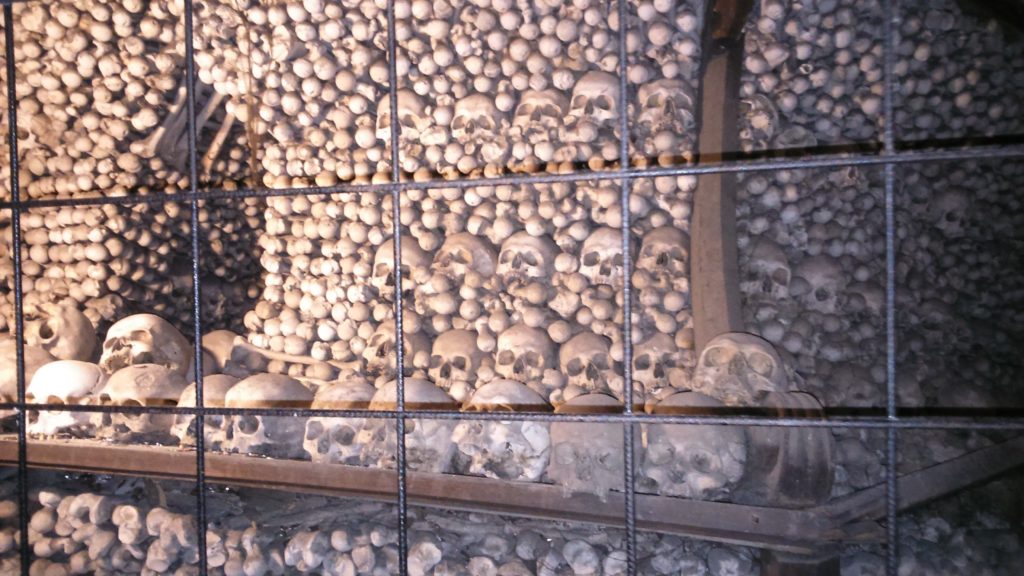
Church of Bones, Kutna Hora, Czech Republic
Obscured behind a pyramid of grinning skulls is a statue of the crucifixion which appears bizarrely out of place amidst the rest of the skeletal shenanigans. While random mountains of bones nestle haphazardly in corners, elsewhere, individual skulls are carefully placed into glass cabinets to demonstrate the damage inflicted from medieval weapons.
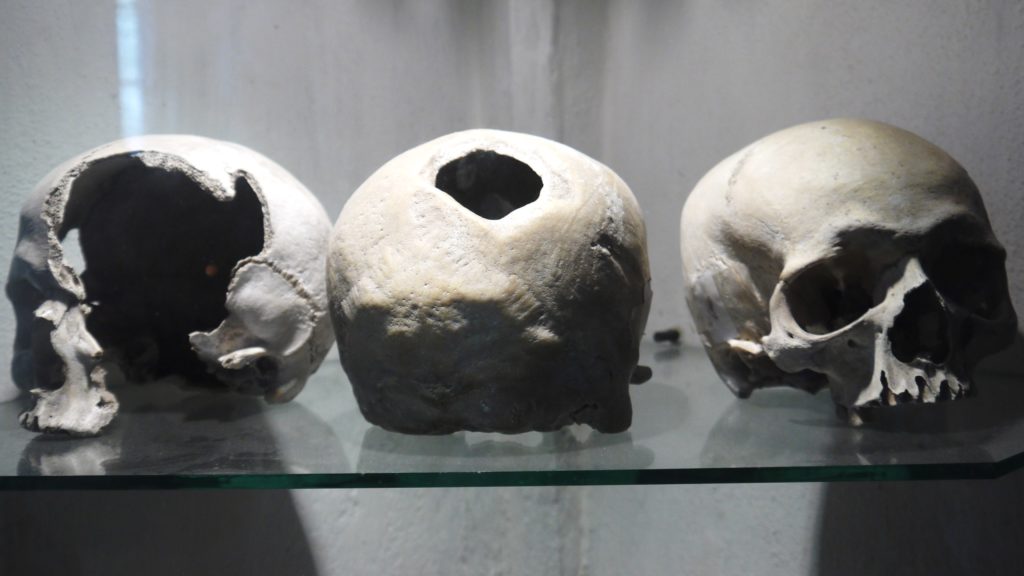
Glass cabinet of skulls, Church of Bones
But how did this macabre masterpiece come about? Legend has it that partially blind Monks first created geometric shapes with the bones. Later in 1870, a wood carver named Frantisek Rint was commissioned by the Schwarzenberg family to decorate the chapel with the bones. His designs were created as a cheery reminder of the impermanence of human life and the inescapable nature of death.
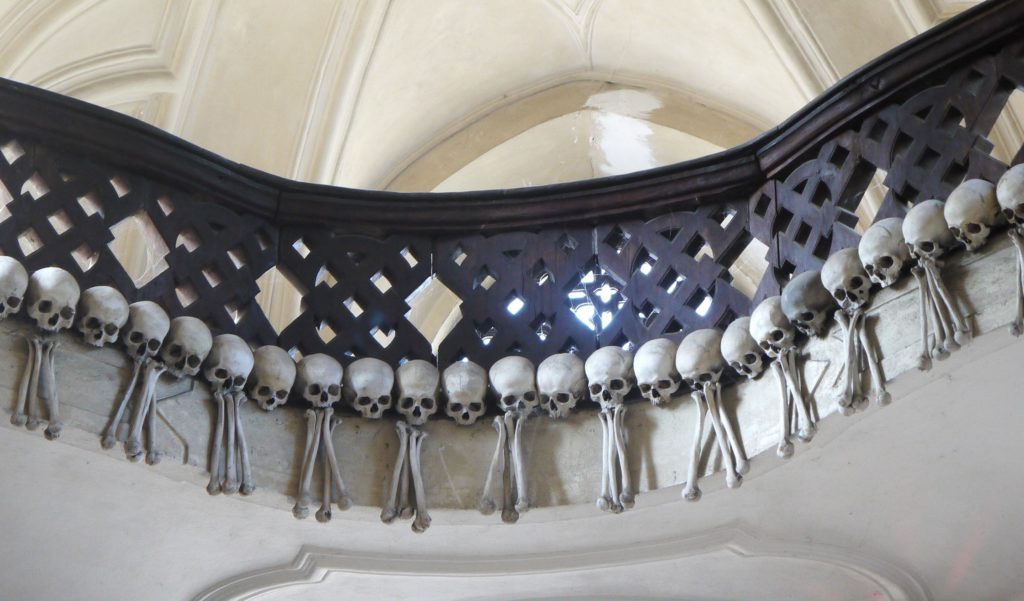
Balcony, Church of Bones, Kutna Hora
From the chandelier that contains every bone in the human body, to the skull candelabras, chalices and coats of arms that line the walls; there’s no disputing that the bones are an amazing feat of art. What’s more disturbing is the everlasting nature of the bones which appear to mock the comparative brevity of our mortal lives.
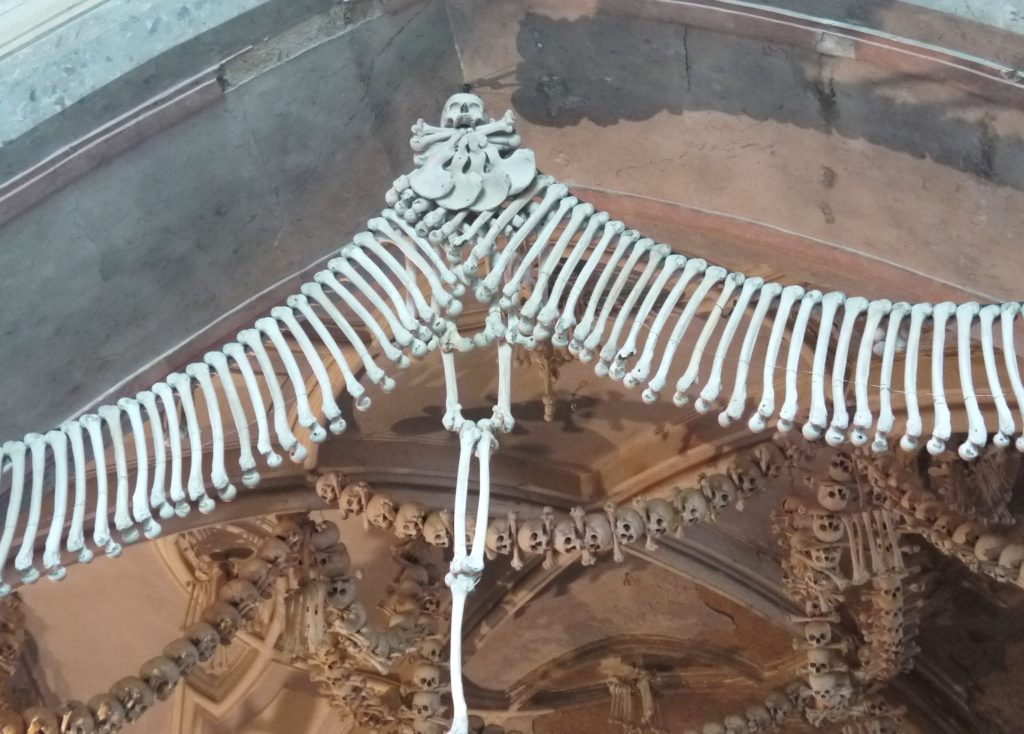
Church of Bones, Kutna Hora, Czech Republic
While much care has gone into the displays, I can’t shift the uneasy feelings of distaste that accompanies me on my visit. Would I want my remains displayed on a wall for the entertainment of generations to come? Or should we view bones as being merely the by-products of a life gone by?
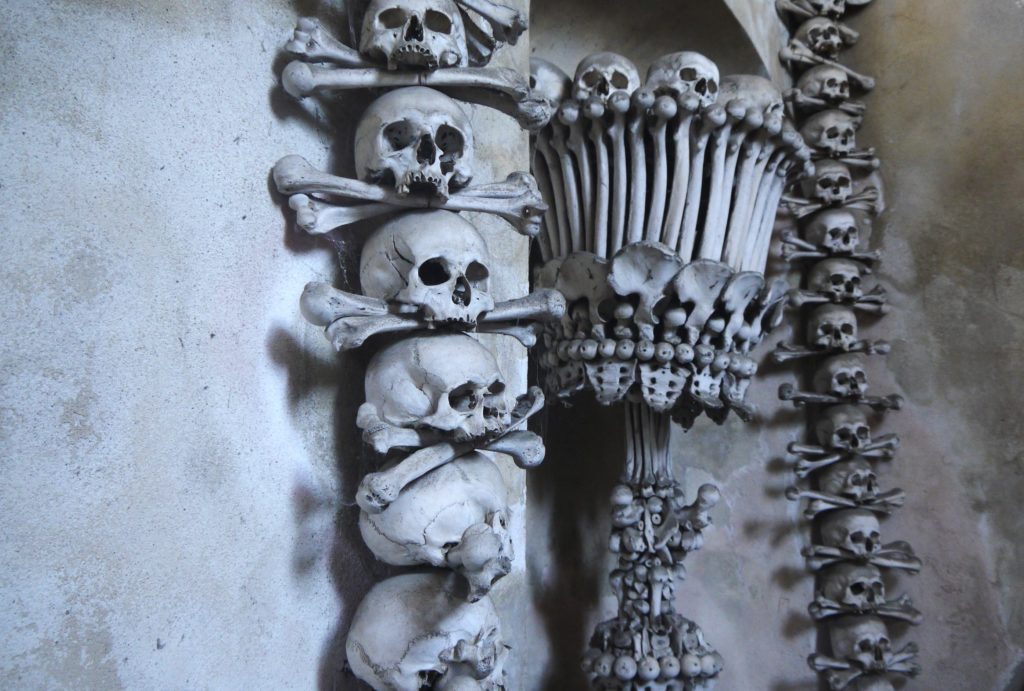
Church of Bones, Kutna Hora. Czech Republic
With the exhumation of remains becoming more mainstream in our own crowded cemeteries – who are we to judge what other countries do? With these cheery thoughts buzzing through my head, I left the chapel with one thought in mind. When my time comes, it’s cremation all the way.
The bones church is located a forty-five minute train ride from Prague Central Station. The church is open 7 days a week.
Admission fee: 40kc for adults / 20kc for students (May 2016)
No fee for photography.
